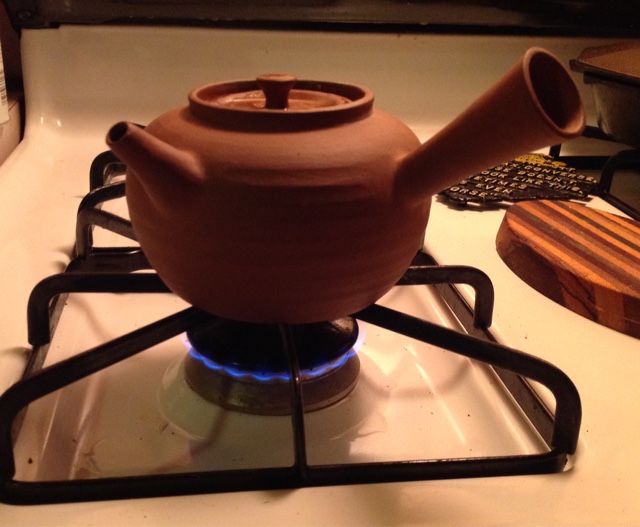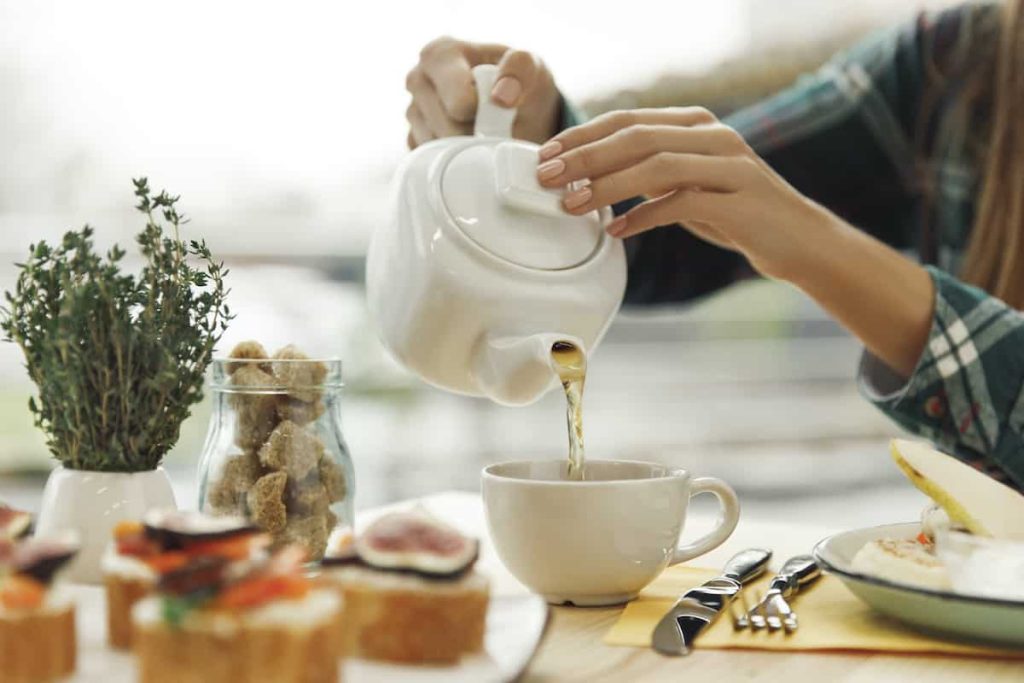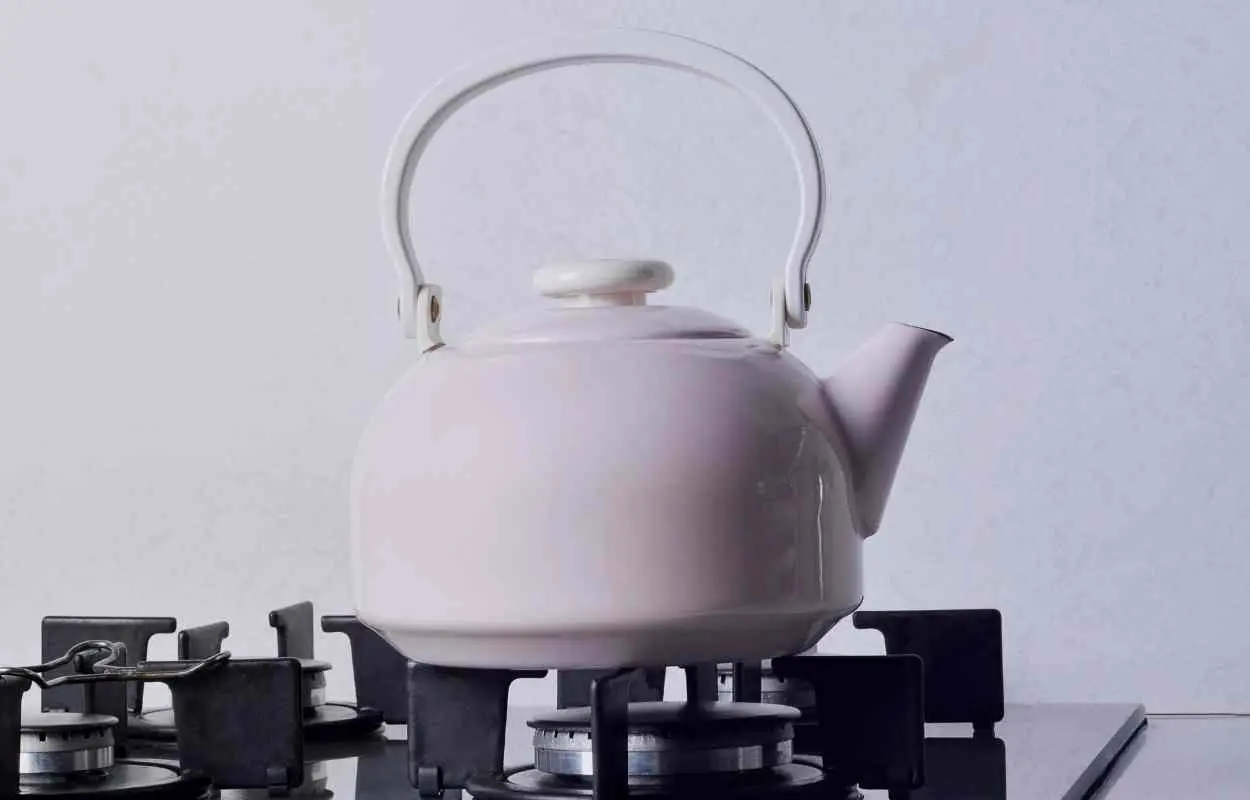Ceramic teapots, with their elegant designs and rich histories, have long been cherished by tea enthusiasts worldwide. Their origin traces back to ancient China, where they evolved in tandem with the culture of tea drinking. These teapots have not only served as functional vessels for brewing the perfect cup but have also been a testament to craftsmanship, tradition, and art.
Over time, as the world grew more interconnected, the popularity of ceramic teapots spread across continents. With diverse cultures adopting and adapting this vessel, a myriad of designs, patterns, and styles emerged. From the intricate blue and white porcelain of the Ming Dynasty to the earthy, rustic designs found in European pottery, ceramic teapots became a symbol of both individuality and shared tea-drinking experiences.
Today, in our modern kitchens equipped with an array of appliances, a common question arises among tea lovers and culinary aficionados alike: “Can you put a ceramic teapot on the stove?” It’s a valid query, considering our inclination to combine traditional artifacts with contemporary methods.
This article delves into this very question, examining the suitability of ceramic teapots on stovetops, understanding the underlying factors, and offering guidance on how to best care for these beloved vessels.
Can You Put a Ceramic Tea Pot On The Stove?
At the heart of many kitchens, the stove serves as the epicenter of culinary adventures, and understandably, many wish to utilize it for a variety of tasks, including heating up their cherished ceramic teapots. But is this safe? Can one confidently place a ceramic teapot on the stove without repercussions?
It fundamentally depends on the specific type of ceramic and the manufacturer’s instructions. While some ceramic teapots are designed to be stove-safe, many others can crack, get damaged, or even shatter when exposed to direct heat.
Recommended: Does Nespresso Have Tea Pods?
Understanding Ceramic’s Heat Conductivity
Ceramic, in its essence, is a non-metallic, inorganic material that undergoes a process called sintering, where it’s exposed to high temperatures to achieve its final solid form. By nature, ceramics can withstand high temperatures. However, its heat conductivity is not as efficient as metals, which means it doesn’t distribute heat as evenly. This can lead to “hot spots” where certain sections of the teapot become hotter than others.
Factors Determining Stove Safety
- Type of Clay and Glazing: Different clays have varying heat resistance. Porcelain, for instance, is generally more heat-resistant than earthenware. The type of glaze can also play a role. Some glazes might begin to crack or craze under high temperatures.
- Thickness of the Ceramic: A thicker pot may distribute heat more evenly than a thinner one. However, it could also take longer to heat up and might retain heat for extended periods after being removed from the stove.
- Manufacturing Process and Quality: Handmade teapots, though beautiful and unique, might not always be as uniformly crafted as machine-made ones. Any inconsistencies in the ceramic’s thickness or in its shape can lead to uneven heat distribution and potentially increase the risk of cracking.
Recommended: Can You Drink Loaded Teas While Pregnant?
While the allure of heating water directly in a ceramic teapot on the stove is tempting, it’s crucial to know your teapot’s specifications. Always refer to the manufacturer’s guidelines or any accompanying documentation before taking the leap.

Risks of Placing Ceramic Teapots Directly on the Stove
The image of a ceramic teapot warming over a flickering flame evokes a sense of nostalgia, and while it may appear charming, it’s essential to be informed about the potential dangers before deciding to take this route. Placing a ceramic teapot directly on the stove without adequate knowledge can lead to several undesired outcomes.
1. Thermal Shock and Cracking
The most immediate risk is that of thermal shock. When ceramic, which is naturally not a great conductor of heat, is suddenly subjected to a high temperature, it can experience rapid expansion. If one part of the teapot heats up faster than another, it can cause tension within the material.
This tension can result in cracking or, in extreme cases, shattering. Especially if the teapot is cold or room temperature and is placed on a hot burner, the risk significantly increases.
2. Weakening Over Time
Even if a ceramic teapot does not immediately show signs of damage after being placed on a stove, repeated exposure to direct flame or electric burners can weaken its structural integrity over time.
This degradation might not be visible initially but can eventually lead to the teapot becoming more susceptible to cracks or breaks during regular use.
3. Uneven Heating and “Hot Spots”
As previously mentioned, ceramic doesn’t distribute heat as uniformly as metals do. This can lead to the formation of “hot spots” where specific sections of the teapot get considerably hotter than others.
Not only can this compromise the integrity of the teapot, but it can also result in uneven brewing of your tea, where some parts may get over-brewed while others remain under-brewed.
4. Glaze Deterioration
Some ceramic glazes are not designed to withstand direct flame or extreme temperatures. Exposing such teapots to a stove can cause the glaze to craze (develop fine cracks) or discolor. Over time, this can affect both the aesthetic and functional qualities of the teapot.
5. Safety Hazards
A cracked or shattered teapot can pose immediate risks, especially if it breaks while containing hot water. There’s a danger of burns from hot water spillage or cuts from ceramic shards.
Recommended: What Does Ginger Tea Taste Like?
In light of these potential risks, it’s always advised to proceed with caution. If you’re uncertain about your ceramic teapot’s stove compatibility, it’s best to resort to alternative methods for heating water or consult the manufacturer’s guidelines to ensure the safety and longevity of your prized vessel.
Safe Methods to Heat Water in Ceramic Teapots
For those who cherish their ceramic teapots, ensuring their longevity while enjoying a hot brew is a balancing act. Fortunately, there are several methods to safely heat water in ceramic teapots without compromising their structure or the quality of the tea they brew:
- Using a Kettle: Arguably the safest and most common method, simply boil water in a kettle – whether it’s electric or stovetop – and then pour the hot water into the ceramic teapot. This method ensures the water reaches the desired temperature without subjecting the teapot to direct heat, thus preserving its integrity.
- Heat Diffuser: For those who are still inclined to use the stove, a heat diffuser is an excellent accessory. Placed between the stove and the teapot, it acts as a protective barrier, distributing the heat more evenly and reducing the intensity of the direct flame or heat. This method minimizes hot spots and reduces the risk of thermal shock.
- Teapot Warmers: These are platforms, often made of metal with a space for a tea light candle below. Once your water is heated and tea is steeping, you can place the teapot on the warmer to keep it hot for longer durations without the dangers associated with stovetop heating.
- Electric Ceramic Teapots: In response to the modern consumer’s needs, some manufacturers now offer electric ceramic teapots. Designed to combine the beauty of ceramic with the functionality of an electric kettle, these teapots have built-in heating elements and are specifically crafted to handle the heat, providing a safe and efficient way to warm water directly in the pot.
- Water Bath or Double Boiler Method: Though more common for delicate culinary tasks, this method can be adapted for tea. Fill a larger pot with water and place the ceramic teapot inside, ensuring that water doesn’t enter the teapot. As the outer pot is heated, the water inside it warms the ceramic teapot gently and uniformly.
- Pre-warming the Teapot: Before adding boiling water to your teapot, pre-warm it by rinsing it with hot tap water. This gradual increase in temperature prepares the ceramic material, reducing the shock from boiling water and thereby lowering the risk of cracks.
Recommended: What Does Jasmine Milk Tea Taste Like?
While the urge to place a ceramic teapot directly on the stove can be strong, especially when seeking a quick brew, it’s essential to prioritize the teapot’s safety and longevity.
By adopting one or more of the methods mentioned above, you can ensure a delicious cup of tea without compromising your teapot’s structure or aesthetics.
Tips to Keep Your Ceramic Teapot in Good Condition
A ceramic teapot isn’t just a vessel for brewing tea; for many, it’s a cherished piece of art, a memory holder, or even a valued heirloom passed down through generations. Ensuring its longevity means not only enjoying countless cups of comforting tea but also preserving its sentimental and aesthetic value.
Here are some tips to ensure your ceramic teapot remains in pristine condition:
- Gentle Cleaning: Always clean your teapot gently using mild detergents. Avoid abrasive scouring pads or brushes which can scratch the surface, particularly the glaze. Instead, opt for a soft cloth or sponge. If there are stubborn tea stains, let the pot soak in warm, soapy water for a while before cleaning.
- Avoid Rapid Temperature Changes: Subjecting your ceramic teapot to rapid temperature changes is a recipe for disaster. Don’t pour boiling water into a cold teapot or vice versa. If it’s been stored in a cold place, allow it to reach room temperature or pre-warm it with warm tap water before using it.
- Store in a Safe Spot: Find a dedicated spot in your cabinet where the teapot can be stored without risk of being knocked over or chipped. Ensure it doesn’t rub against other items which might cause abrasions or chips.
- Ensure the Teapot is Dry Before Storing: After cleaning, allow your teapot to air dry completely before storing it. Any residual moisture can lead to mold growth or weaken the ceramic over time. If you have a teapot with a lid, it’s a good idea to store them separately or slightly ajar to ensure proper ventilation.
- Regularly Check for Damages: Before each use, give your teapot a quick once-over to check for any cracks, chips, or other damages. Using a damaged teapot, especially on heat, can exacerbate the problem and even pose safety risks.
- Avoid Overfilling: While it might be tempting to fill the teapot to the brim, especially when hosting guests, it’s best to avoid overfilling. Doing so can put undue pressure on the pot, potentially leading to cracks or spills when pouring.
- Handle with Care: Always handle your teapot with both hands, especially when it’s full. This not only ensures a secure grip but also distributes the weight more evenly, reducing the risk of strain on the handle or spout.
- Rotate Usage (if you have multiple teapots): If you’re a teapot enthusiast with a collection, consider rotating their usage. This gives each pot a break and reduces the wear and tear on any single one.
- Avoid Harsh Chemicals: If you’re trying to remove stubborn stains, be wary of using harsh chemicals that might erode the glaze or the ceramic. Natural cleaners, like a mixture of baking soda and water, can be an effective and gentle alternative.
- Educate Others: If you live with family or have guests over, make sure they know how to handle and clean the teapot properly. It’s often the unintentional mishaps that can lead to damage.
Recommended: What a Tea Bag Does In Warm Water Crosswood
By adhering to these tips and treating your ceramic teapot with the care and respect it deserves, you can ensure its longevity and enjoy many heartwarming brews in the years to come.

Alternative Materials for Stove-Top Teapots
If the charm of heating your teapot directly on the stove is too hard to resist, it might be time to consider teapots made of materials designed to withstand such conditions. Different materials come with their unique benefits and potential drawbacks.
Here’s a closer look at some popular alternatives to ceramic for stove-top teapots:
1. Cast Iron
- Benefits: Cast iron teapots, known as “tetsubin” in Japan, are incredibly durable and excellent heat retainers. Once heated, they can keep your tea warm for a considerable amount of time. The iron can also add a hint of mineral flavor to the tea, which some people appreciate.
- Drawbacks: They can be heavy, and if not properly cared for, there’s a risk of rust. It’s also crucial to ensure they have an enamel lining, which prevents the tea from coming into direct contact with the iron.
2. Stainless Steel
- Benefits: Stainless steel is a robust and durable material that’s resistant to rust and staining. It heats up quickly and evenly and is generally safe for stovetop use.
- Drawbacks: Unlike ceramic or cast iron, stainless steel doesn’t retain heat for as long. Additionally, some purists believe it might slightly alter the tea’s taste.
3. Glass
- Benefits: Glass teapots are visually appealing, allowing you to watch your tea leaves dance and unfurl as they steep. They don’t retain flavors or aromas from previous brews, making them excellent for trying different types of tea.
- Drawbacks: Not all glass teapots are stovetop safe. Only those made from borosilicate glass can withstand direct heat, but even they can be prone to cracking if not handled with care. They also don’t retain heat as long as some other materials.
4. Enamel on Steel
- Benefits: Enamel-coated steel teapots offer a blend of durability and aesthetic appeal. They’re resistant to rust, don’t impart flavors, and can handle direct stove-top heat.
- Drawbacks: They can chip if dropped, exposing the underlying steel, which can then rust. Over time, the enamel might also develop fine cracks.
5. Copper
- Benefits: Copper teapots are excellent heat conductors, ensuring quick and even heating. They also have a beautiful, classic appearance that many find appealing.
- Drawbacks: Copper can react with certain foods and beverages, including tea, so it’s crucial to opt for teapots that are lined with another material, like stainless steel or tin.
6. Aluminum
- Benefits: Lightweight and generally inexpensive, aluminum teapots heat up quickly and are suitable for most stove tops.
- Drawbacks: Like copper, aluminum can react with acidic foods and beverages. Over time, it might also be prone to dents and scratches.
Recommended: Does Panera Green Tea Have Caffeine?
While ceramic teapots possess an unmatched charm and tradition, if you’re set on stove-top heating, there are plenty of alternatives to choose from. When purchasing, always verify that the teapot is designed for direct stove-top use and follow manufacturer guidelines for care and usage to ensure both safety and durability.
FAQs
Why can’t all ceramic teapots go on the stove?
Not all ceramic teapots are crafted with the same type of clay or fired at the same temperatures. Some ceramics might not be able to handle the rapid and intense heat from a stovetop, leading to thermal shock and possible breakage.
How can I tell if my teapot is stovetop safe?
The safest method is to consult the manufacturer’s guidelines or product label. If such information isn’t available, and you can’t reach the manufacturer, it’s best to err on the side of caution and avoid stovetop use.
Can I microwave my ceramic teapot to heat the water?
While many ceramics are microwave-safe, not all are. Check for any metallic components (like gold or silver linings) that can cause sparks. Also, ensure that there are no cracks in the teapot, as these can expand in the microwave. Always refer to manufacturer guidelines.
Are there signs to watch for that indicate my ceramic teapot is degrading?
Yes, watch for visible cracks, crazing (fine cracks in the glaze), or discoloration. Any of these signs might indicate your teapot is weakening and more susceptible to breakage.
What’s the difference between a teapot and a tea kettle?
A teapot is primarily used for steeping tea leaves, while a tea kettle is used for heating water. Kettles are specifically designed to withstand direct heat sources, whereas not all teapots are.
Do other teapot materials, like cast iron or glass, also have specific care instructions?
Absolutely. For instance, cast iron teapots often require thorough drying after use to prevent rust, while borosilicate glass teapots, although heat-resistant, need to be protected from physical shocks to prevent cracking.
Can I repair my ceramic teapot if it cracks or chips?
Minor chips and cracks can sometimes be repaired using food-safe ceramic glue. However, a repaired teapot might not be as heat-resistant as before and is better used for decorative purposes or with lukewarm water.
Conclusion
Teapots, with their rich history and diverse materials, are more than just vessels for brewing; they’re often cherished artifacts that bring warmth and tradition into our homes. While the allure of heating a ceramic teapot directly on the stove may be strong, understanding its limitations and risks is crucial.
By considering alternative materials designed for stovetop use or employing safer heating methods for ceramics, we ensure not only the longevity of these beautiful pieces but also the safety of our brewing experience. As with all treasured items, knowledge and care go a long way in preserving their essence and function.
